Two for two. Anycubic is releasing its second digital light processing (DLP) based resin 3D printer. Just like its predecessor, the Photon Ultra, the new Photon D2 is the result of a collaboration between Anycubic and Texas Instruments. Could this be the perfect duo to make a once cost-prohibitive technology available to consumers?
To make a splash in the resin scene so heavily dominated by MSLA-based 3D printers, the Photon D2 has improved upon the Ultra with higher print precision, larger print volume, a long service life, and low energy consumption. In fact, Anycubic claims the Photon D2 is comparable to similarly-sized LCD-based printers with 8K resolution and delivers comparable print detail. However, that’s about all that is currently known about this new contender for the print resolution podium.
At the time of publishing, Anycubic has not yet fully revealed the Photon D2, except for a few teaser tweets with an appeal to stay tuned.
Lucky us! We got early access to a Photon D2 production unit and took it for a test drive to see if Anycubic’s claims track, and generally what we make of the printer. Bear in mind that this is not a full-fledged review; though we are already working on one where we will inspect the printer’s capabilities and differences from LCD-based printers in full detail.
For our first impression, read on.
Bigger and Better
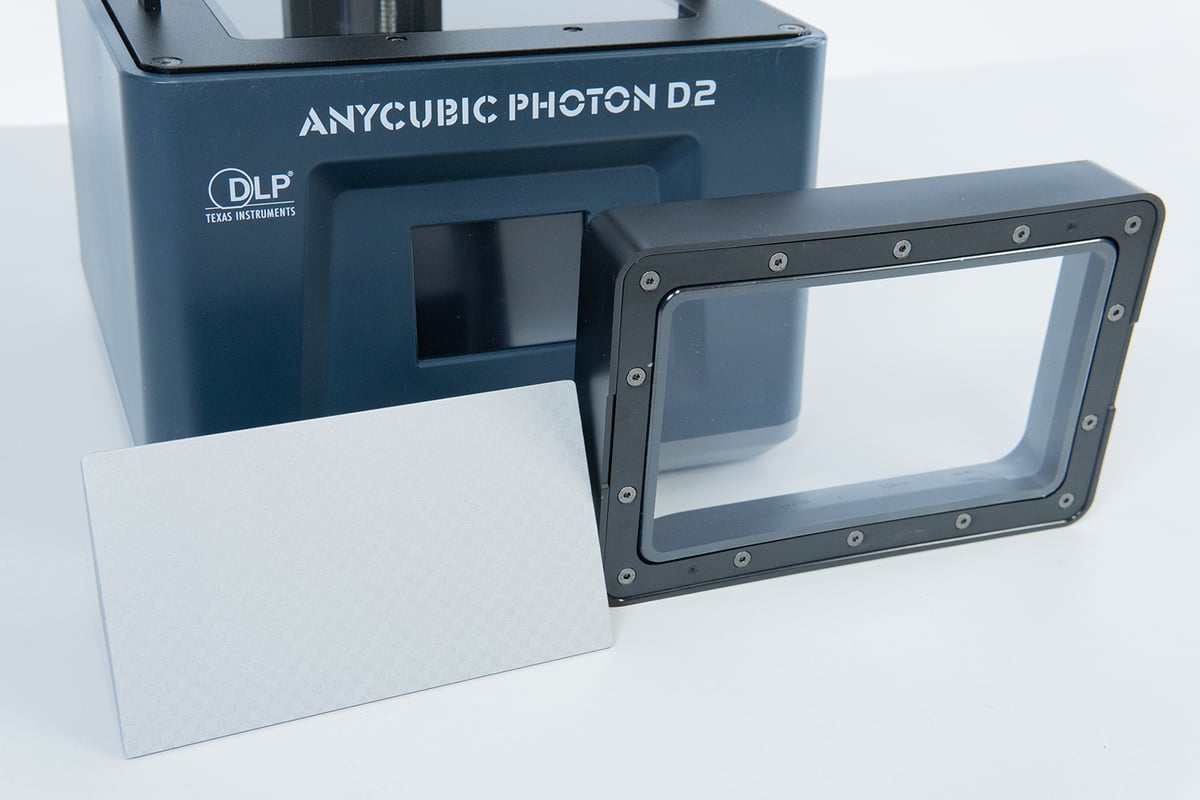
Printing in high detail is one thing, having the space to do so is another. As such, Anycubic’s second attempt at a DLP resin 3D printer comes with a larger print volume. The Photon D2 offers a total volume of 131 x 73 x 165 mm. Granted, by contemporary standards, this is not quite what you would consider “ample printing space,” but it’s a considerable step-up over the Ultra. For reference, the Phrozen Sonic Mini 8K, an arguably equally-capable MSLA machine in terms of resolution (more on that below), offers 165 x 72 x 180 mm.
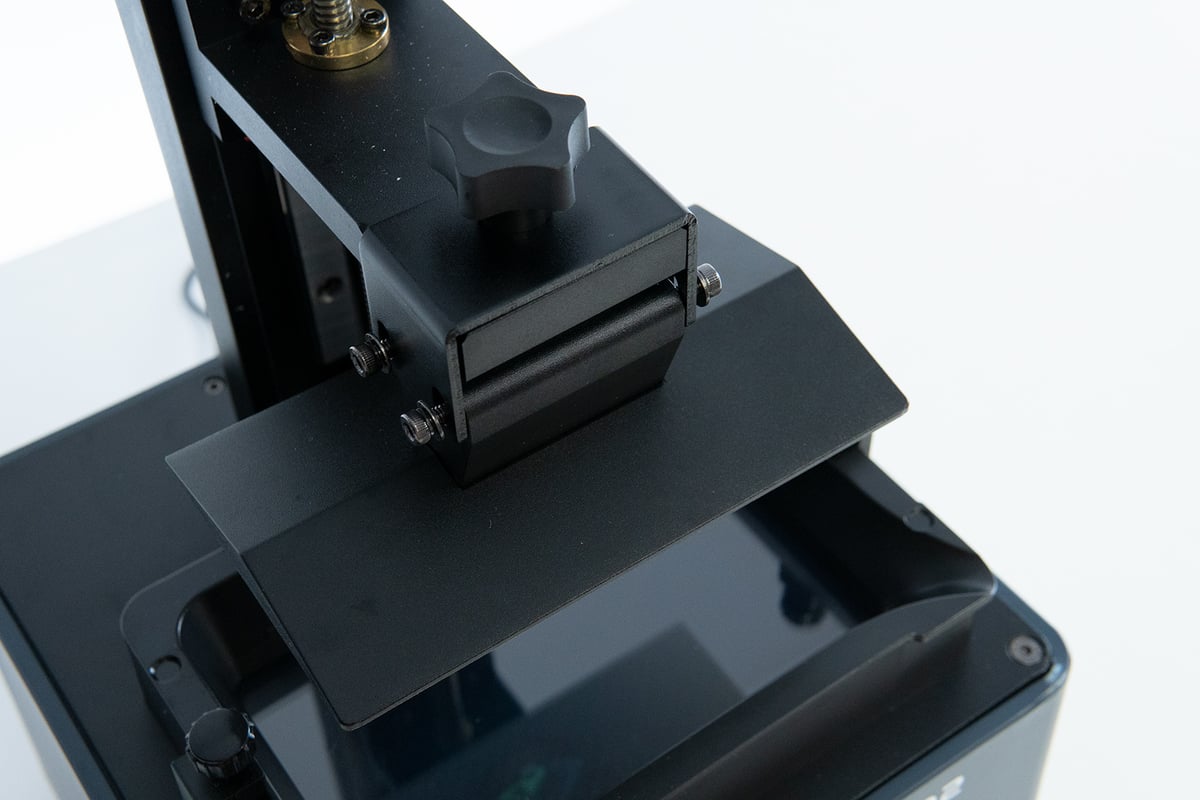
Speaking of resolution, the D2 comes with an improved projector. Unlike MSLA 3D printers, where an LCD screen is illuminated by a light source and masks areas that don’t need to be cured, DLP 3D printers use a light projector and Digital Micromirror Device (DMD) to direct UV light. For detailed information on this process, check out our overview of DLP technology, which explains the benefits and differences of DLP compared to MSLA.
According to Anycubic, the D2’s 2K projector (2560 x 1440 pixels) has a maximum pixel density of 498ppi and is capable of a 51-micron XY accuracy. However, Anycubic claims it can keep up with, and even outshine, the stellar performance of what is currently considered the resolution benchmark in consumer resin 3D printing: 8K. Just like the Sonic Mini 8K and its 22-micron XY accuracy.
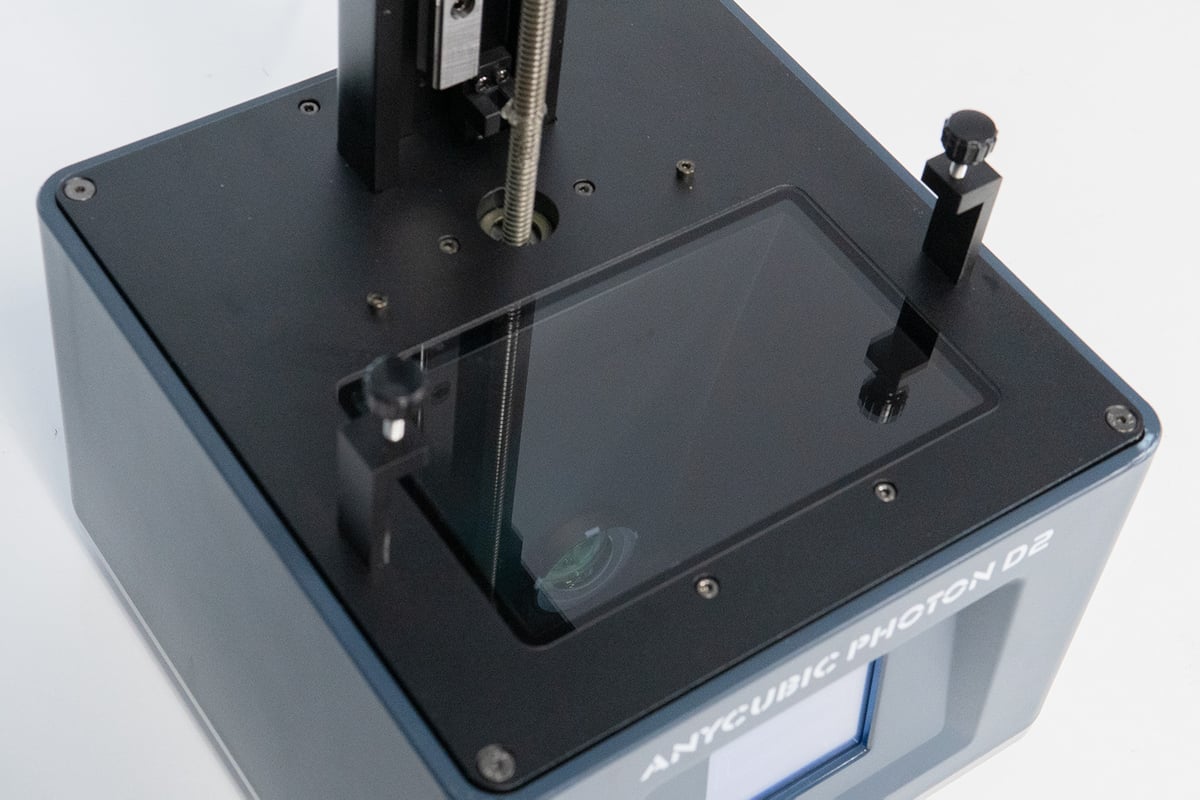
2K equals 8K, you ask? Well, DLP projectors are not – unlike an LCD on an MSLA-based printer – restricted by a fixed screen resolution. Projectors can zoom in and out, like in a home cinema setup, allowing DLP 3D printers to change their pixel size and print small models in much higher quality than with large, “zoomed out” models. Bear in mind that, being different technologies, these specs aren’t immediately comparable. One of the reasons the D2 can keep up with the likes of 8K LCD 3D printers with better XY accuracy (pixel size) could be the lack of light bleed, though, as only illuminating the precise pixels for each layer could lead to much sharper depiction of detail — even at a “lower” resolution.
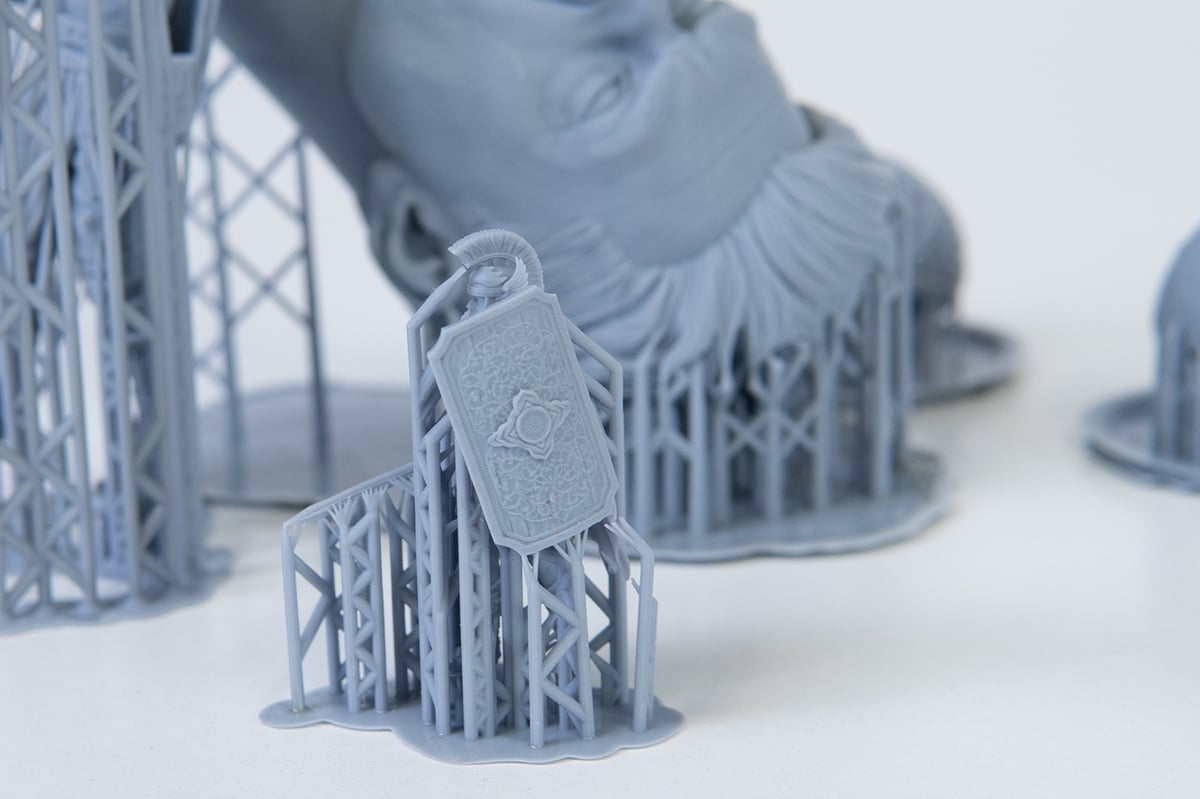
Another benefit of DLP is the supposedly much longer service life. On a typical MSLA system, you will have to shop for a replacement screen after about 2000 hours of use, but the D2’s projector is stated to last up to ten times longer before needing service: 20,000 hours. That’s about 833 days of lights on. Pretty impressive! Needless to say, we haven’t had the time to put the D2 anywhere close to the 20,000-hour mark, so no thumbs up for now about its longevity, but that difference in uptime is why industries like dental and jewelry have largely stuck with expensive DLP printers all this time.
Stuck in Time
Fair to say, the technology behind the D2 can be considered somewhat new to the consumer market. Nevertheless, handling the printer feels a bit like we’ve traveled back in time to the early days of consumer resin 3D printing (2019-ish, to anyone who hasn’t been around that long). Overall the printer’s appearance is very plasticky, which is, in and of itself, not a bad thing. We’re used to plasticky printers from other Anycubic releases such as the Photon M3. But notably absent on the D2 are the quality of life features that have become standard.
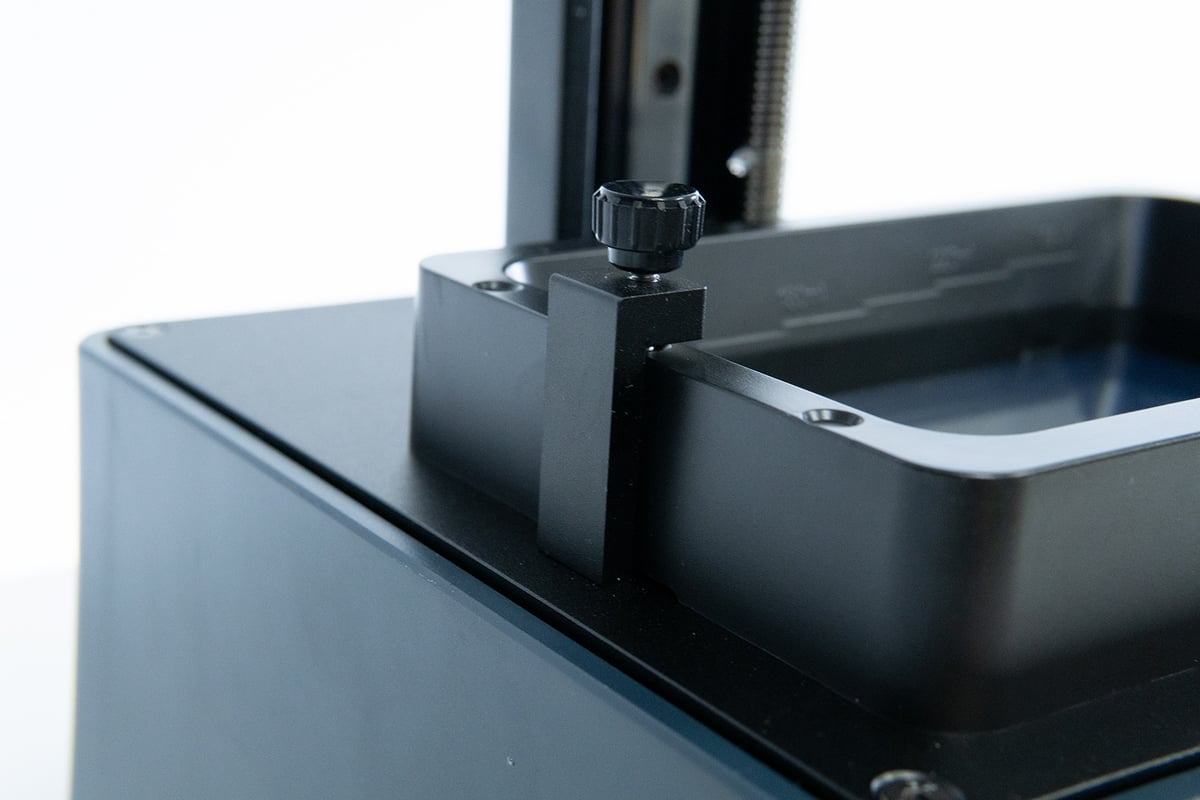
No feet on the plastic vat, for example, makes the FEP sheet prone to scratches and damage when handled outside of the printer. The slide-in vat and relatively short fixture screws make loading and unloading the resin-filled vat cumbersome. If you have ever used a resin 3D printer, you will probably know: the little things can make a great experience just a tad bit more convenient. So far, we have the D2 down as missing some easy checkmarks for user handiness.
Of Prints and Details
Naturally, we fired up the D2 to see what it is capable of. And by firing up, we mean starting it whisper-quiet. Unlike its LCD-based companions, which typically launch some sort of ventilation to keep the light source and other guts cooled down, the D2’s LED-illuminated projector is low in power consumption and runs cool. No ventilation is needed, it seems. The only sound the D2 makes when printing is the Z-axis motor doing its thing. Who knew resin 3D printing could be this quiet?
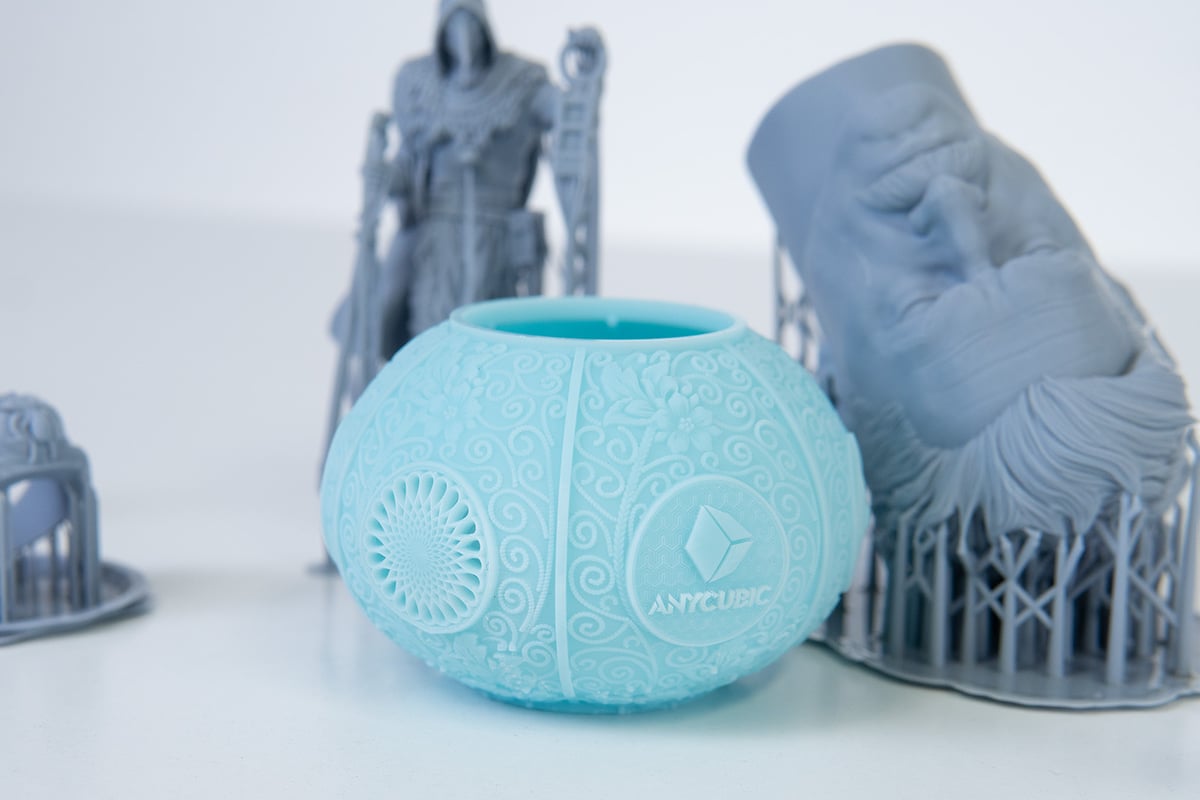
The arguably more pressing question is: how detailed can you print on the Photon D2? Bear in mind, in theory, the smaller the print is the more detail the projector can depict. To test it out, we threw a handful of test prints on the D2, from miniatures to large models.
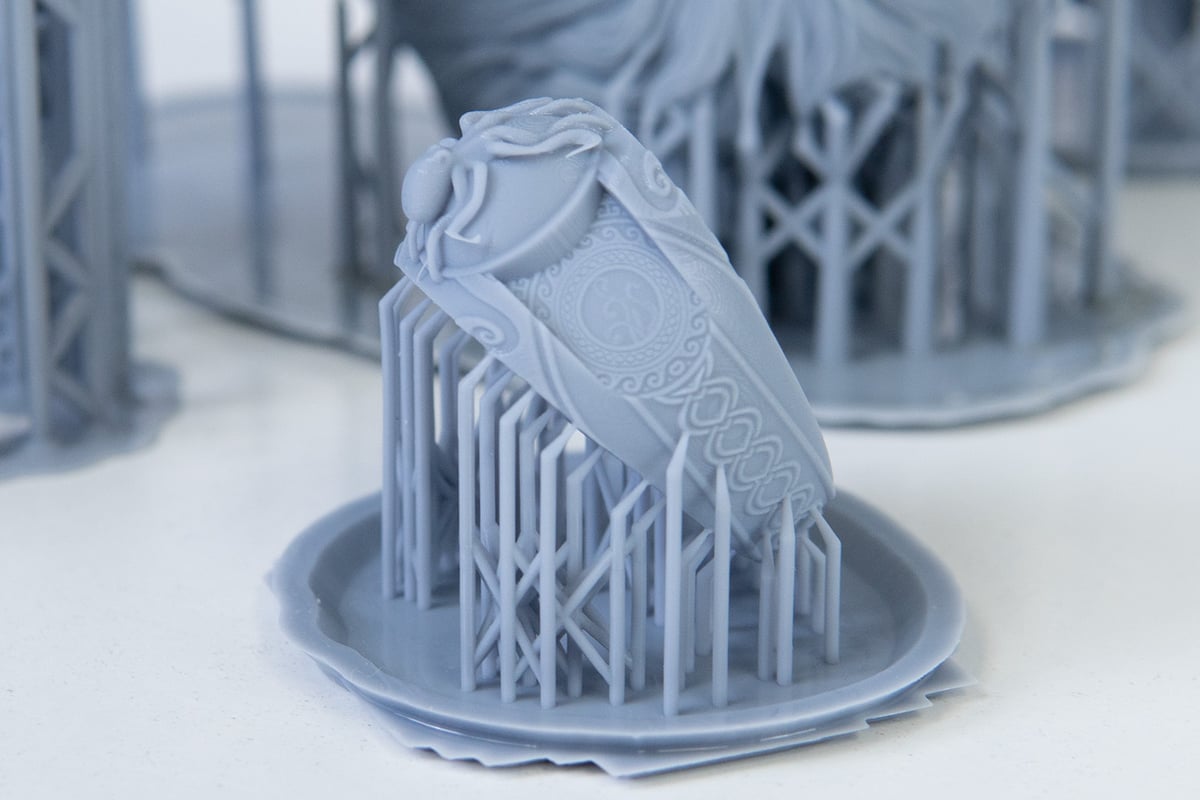
First and foremost, prints off the D2 look astonishing. Intricate details are portrayed even (or should we say especially, given the technology) on tiny prints with great precision. And, at least to the naked eye, there seems to be no quality loss on larger objects, either.
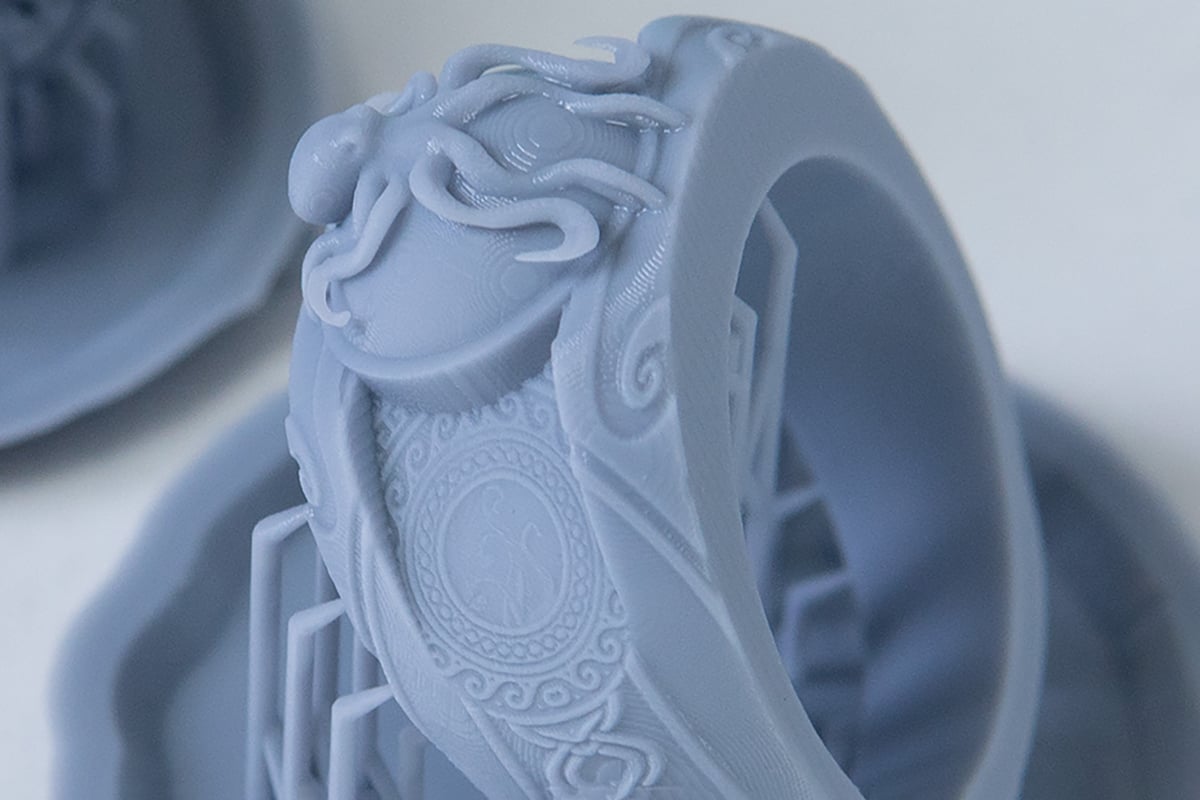
For the sake of comparison, and to see if Anycubic’s claims can be upheld, we de-mothballed the Sonic Mini 8K. In-person, print results look at least as good, if not a bit more organic, on the D2. Although, the latter could be attributed to the slight color divergence you get, even while using the same (DLP) resin. Upon closer inspection, prints are ever so more pronounced. If you take a microscope in hand and look at intricate parts with scrutiny, that is.
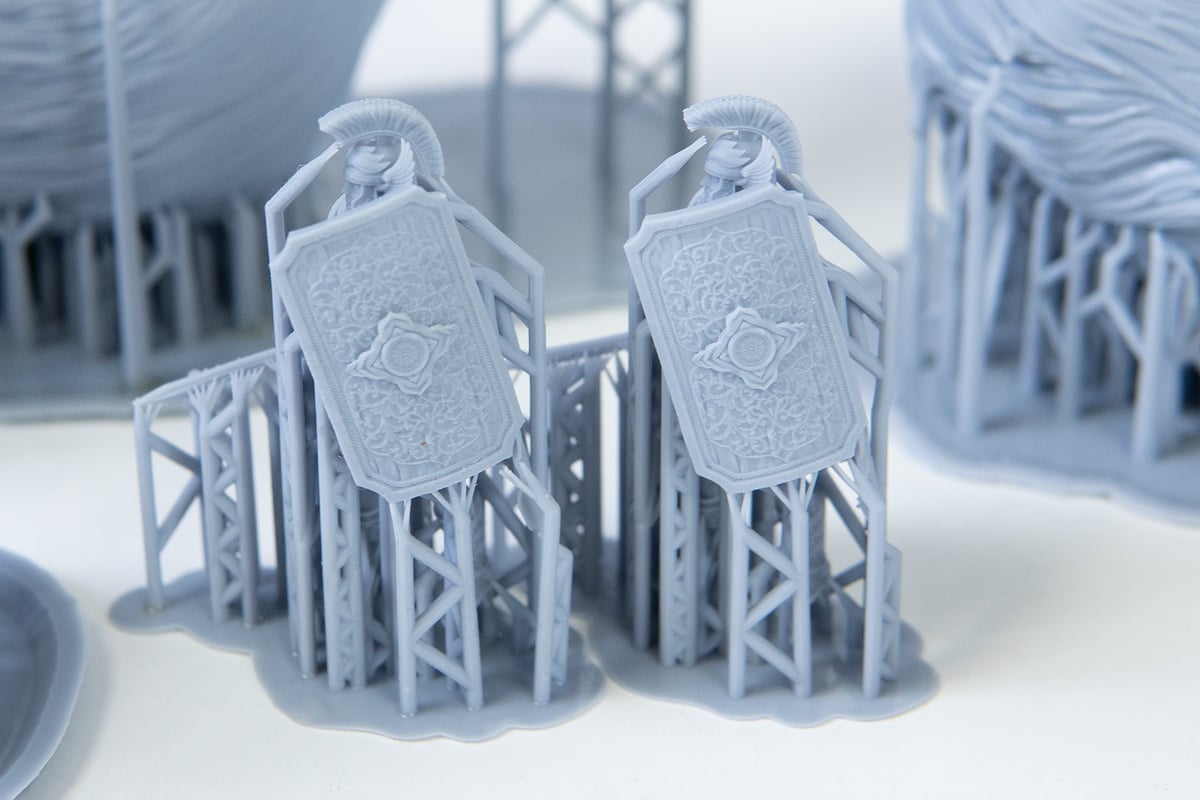
So far, we are pretty impressed by the detailed prints we’re getting and are looking forward to giving this DLP novelty a proper review — microscopes at the ready. We’re especially interested in Anyubic’s said-to-be specifically designed ani-aliasing algorithm, which merits a deep dive into print granularity, voxels, and generally how to get the best out of the D2’s capabilities. Stay tuned for our soon-to-follow full review of the Photon D2.
What do you make of the DLP-tech becoming available to the masses? Are you looking to adopt the new tech or stick with the LCD-based variants for now? Let us know in the comments below.
License: The text of "First Look At Anycubic’s Projector-Powered Photon D2" by All3DP is licensed under a Creative Commons Attribution 4.0 International License.

